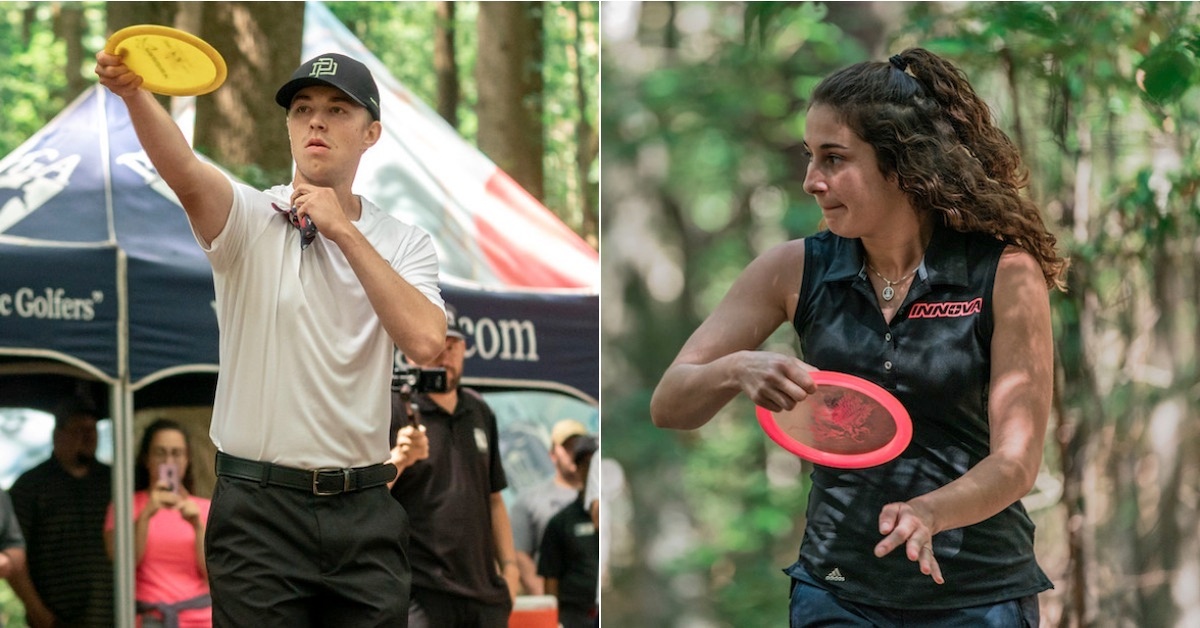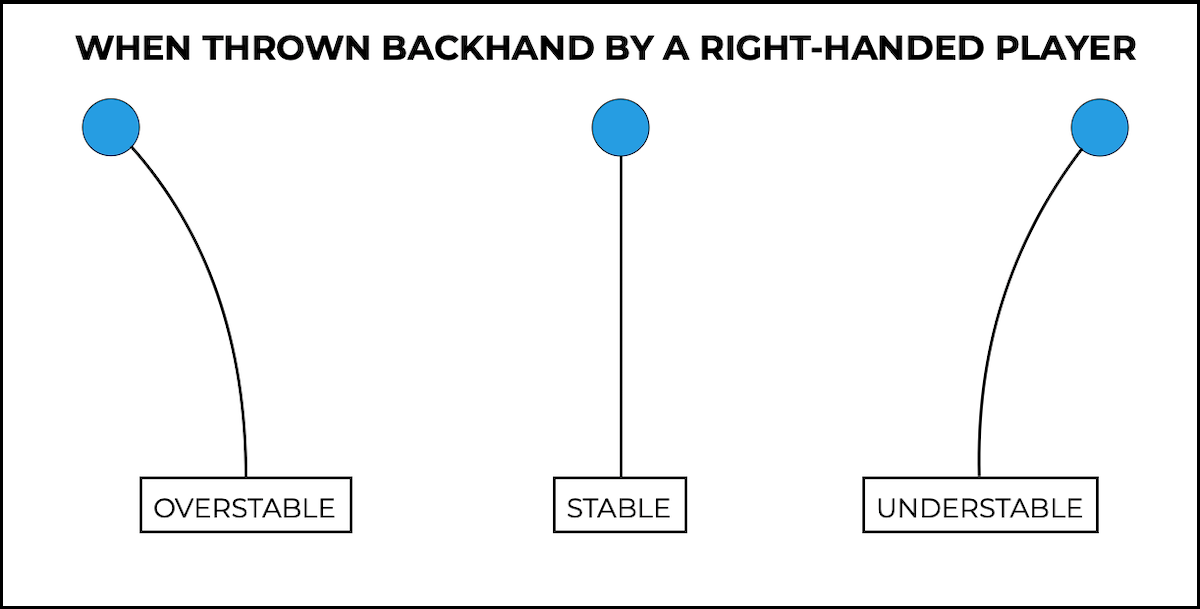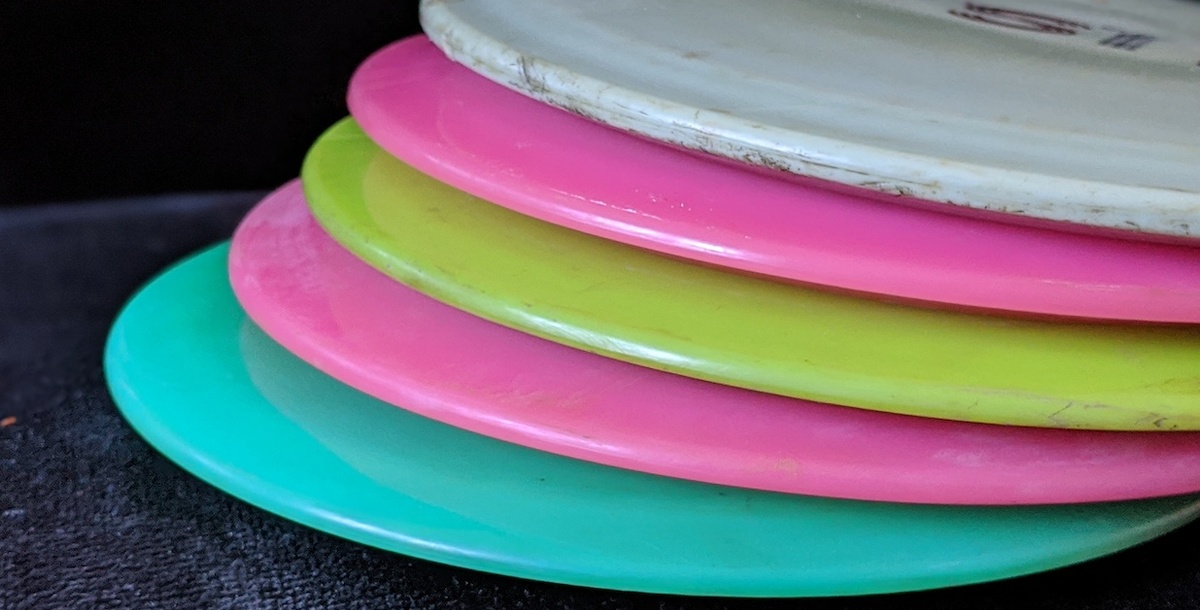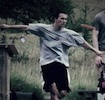
If you've ever tried to play disc golf with an everyday frisbee, you know that the experience is less than satisfying. Using discs specifically designed for disc golf is important to enjoying the sport and improving your scores.
But what sorts of discs exist and when and how should you use all of them?
Discs Explained is a series that goes over the basic disc types—putters, midranges, fairway drivers, and distance drivers—and tells you their purposes, how best to throw them, and what situations to throw them in. We also include recommendations for popular molds of each disc type.
This article focuses on fairway drivers, but you can find the other articles in the Discs Explained series at the links below:
Putters
Midranges
Distance Drivers
BEFORE WE GET TO FAIRWAY DRIVERS...
If you haven't read a different article in the Discs Explained series before, the information in this section will help you more fully understand the advice that comes later.
For those who've recently read a different Discs Explained piece, we suggest scrolling to the FAIRWAY DRIVERS EXPLAINED section as the information in the BEFORE WE GET TO.... section is the same across all articles.
Focus on Righthand Backhand
Though much of the information here will still be very useful to forehand-dominant players, it's important to point out that in regards to aspects like distance, we wrote this piece specifically with backhands in mind. This is because the majority of players tend to throw backhands more comfortably than forehands.
If you don't know what we mean by backhand, it's the technique seen in this clip from JomezPro:
We hope to add similar information for forehands to the blog in the future.
Additionally, the directions we mention for flight patterns refer to those for right-handed players.
Stability and Flight Numbers

Every disc is manufactured with a specific flight pattern in mind. When thrown flat some should go straight as an arrow (stable) while others should turn right (understable) or fade left (overstable). Discs with these intended flight patterns exist in every disc category we discuss in this series.
One way some manufacturers have attempted to concretely define the differences in discs is by using flight numbers. These are a set of four numbers that describe a disc's speed, glide, turn, and fade. We have an in-depth article on flight numbers here, but for this series it's most important to understand what's meant by "speed."
Speed, which is largely governed by shape, is the only thing that truly separates discs into the categories we explore in this series, with putters having the slowest speed numbers and distance drivers the highest.
Discs are made to follow their intended flight paths when thrown at specific speeds. If you throw a disc with too much speed (or improper technique), it will tend to turn over and sometimes even roll. If you throw a disc with too little speed, it will just fade left and not travel very far.
Unfortunately, there is no standard speed scale all manufacturers use. In this series, we'll refer to the one most widely used in disc golf that ranges from 1-15, with discs that fly true at higher speeds having higher numbers.
The maximum speed a disc can reach also affects the distance it can potentially travel. If you compared two discs whose weights were the same and whose flight numbers only differed in the speed category, the one with the higher speed rating should theoretically be capable of more distance.
Beware! You shouldn't take this to mean that because a disc is a higher speed, it will automatically fly farther. Most players need lots of practice and training to throw a high speed disc correctly. In fact, many beginners will find that slower speed discs fly farther for them than higher speed discs.
If you're interested in learning more about the physics behind disc flight, give this article a read.
FAIRWAY DRIVERS EXPLAINED

Any improving disc golfer is always trying to add more distance to their game. For newer players especially, finding a disc that can travel long distances without sacrificing too much control and consistency is a top priority. Often what they're looking for is a fairway driver.
Below we will tell you how and when to throw fairway drivers and what differentiates them from midranges and distance drivers.
Along with our own knowledge and experience, the sources for this section include 2017 Advanced Amateur Disc Golf World Champion AJ Carey and Advanced Women 2019 Amateur Disc Golf World Champion Erikah Weir. We specifically sought out amateur World Champs because top pros tend to make far different disc choices than most amateurs due to elite distance and technical ability.
What Is a Fairway Driver in Disc Golf?
A fairway driver is a disc that is faster and more aerodynamic than a midrange but can be controlled more easily than a distance driver. Most amateurs use them at distances near or just above 300 feet/91 meters. Pro players can throw them much farther. They are a good choice for players who can throw midranges with control and accuracy but want to add more distance to their games.
Learn more about fairway drivers below.
Shape
In relation to putters and midranges, fairway drivers have a lower profile and are more aerodynamic, as you can see in the image below. This makes fairway drivers capable of reaching and maintaining higher speeds than putters and mids.

However, when compared side-by-side with a distance driver, the fairway driver will have a much blunter edge. The rim will also be much smaller, allowing for a more comfortable grip.
Flight Numbers and Patterns
Fairway drivers range from speeds 6 to 10 and cover a wide variety of flight patterns. There are understable fairway drivers used for holes that call for left-to-right shots or for rollers. Some are very similar to a more aerodynamic midrange, with high glide and a stable flight. Others are very overstable and great for hard-turning fairways or when a skip is needed that a blunter midrange just wouldn't be capable of.
Typical Distance
Fairway drivers are generally used anywhere between 250 and 350 feet/76 and 107 meters. Depending on a player’s power, those distances may fluctuate slightly. When controlled distance is a factor, but maximum distance isn’t the main goal, that’s when a fairway is typically used.
How Should I Throw a Fairway Driver?
Sometimes there's a shorter, tighter hole where the flight pattern of a fairway driver is just more appropriate than that of a slower disc. In these situations, some players use a grip that gives them more control of their release point: the fan grip.
Carey is one of these players, and he fan grips by tucking his index finger slightly inside the rim of the disc and fanning the pinky, ring, and middle fingers out underneath the flight plate. This allows for a firm grip, but one that is also relaxed enough to let the disc to leave the hand at the right time during a slow, controlled throw.
The “power grip” is an even more common grip for fairway drivers. With this grip, the pinky, ring, middle, and index fingers are stacked together and wrapped tightly inside the rim. This is a tighter grip, meaning a player needs to generate more force for the disc to release than with a fan grip.
For more on grips, take a look at this article: "5 Great Videos: Disc Golf Grip (Backhand)
When Should I Throw a Fairway Driver?
When the required distance for a shot is too much for a midrange to handle, that’s when a player should reach for their fairway driver.
“I opt for fairway drivers when my mids are no longer effective,” Carey said. “Fairway drivers are a great balance of control and distance.”
A fairway driver is the next progression for distance after a midrange, but for some the fairway driver is (or should be) the final progression. There are many players who can't generate the power needed to effectively use a distance driver, and a fairway driver becomes their de-facto distance driver.
“The most common mistake is that most players are throwing discs that are too high speed,” Carey said. “This usually causes shots to just fade hard, which can create bad form by forcing players to overcorrect the stability of the driver. Flight numbers, stabilities, and flight characteristics are only relevant when they are thrown to match the intended arm speed.”
Disc golfers from the beginner level to the pros are always searching for more distance, but a distance driver isn’t always the answer. If a player has a slower arm speed, then a fairway driver is going to fly just as far for them, if not farther, than a distance driver. An additional benefit is that most fairway drivers will also fly straighter and more predictably than distance drivers.
“In all honesty, for a beginner, drivers can create more bad habits than providing the ever-elusive distance that each player craves,” said Weir.
A specific situation where a fairway driver could be useful is on a shorter, specifically-shaped fairway. You can see this concept in action in the clip below from Central Coast Disc Golf, where pro Nathan Queen uses a fairway driver on a hole that's distance would typically have most professionals reaching for a mid or even a putter. He does this to utilize the fairway driver's quicker turn and ability to carry the distance on a hole with a low ceiling.
Weir also mentioned that sometimes fairway drivers can be good options when wind becomes an issue.
“A shorter shot, whether from the tee or the fairway, generally does not call for a driver to be used,” Weir said. “However, when players feel more comfortable with the flight characteristics of a driver, or there is a lot of wind, they may rely on a driver for control. I have definitely chosen a fairway driver over a midrange in certain instances when the wind or the shape of the fairway have come into play.”
Popular Fairway Drivers
Carey’s go-to fairway driver is the Innova Leopard. He uses it for shots that need a late flip or that need to carry dead straight. He credits the Leopard with helping him learn how to throw far.
Weir has three fairway drivers that she reaches for a lot. Her Innova Valkyrie and Innova Thunderbird are important off the tee for both forehand and backhand drives. The Valkyrie is her go-to shot-shaping driver while the Thunderbird takes its place when the wind picks up because of its extra stability. Her TeeBird3 is also reliable on backhand shots because she can trust the flight path and throw it on a hyzer line.
Both Carey and Weir are not the only ones who prefer these specific fairway drivers. In fact, the Valkyrie, Thunderbird, Leopard, and original TeeBird (a slower and slightly domier version of the TeeBird3) all placed in the top six of Infinite Disc’s best-selling fairway drivers in 2019.
Some other popular fairway drivers outside of the Innova family include the Latitude 64 Saint, MVP Volt, and Discraft Undertaker.
LEARN ABOUT OTHER DISC TYPES
Like what you read? Read the other articles in the Discs Explained series:
Putters
Midranges
Distance Drivers
